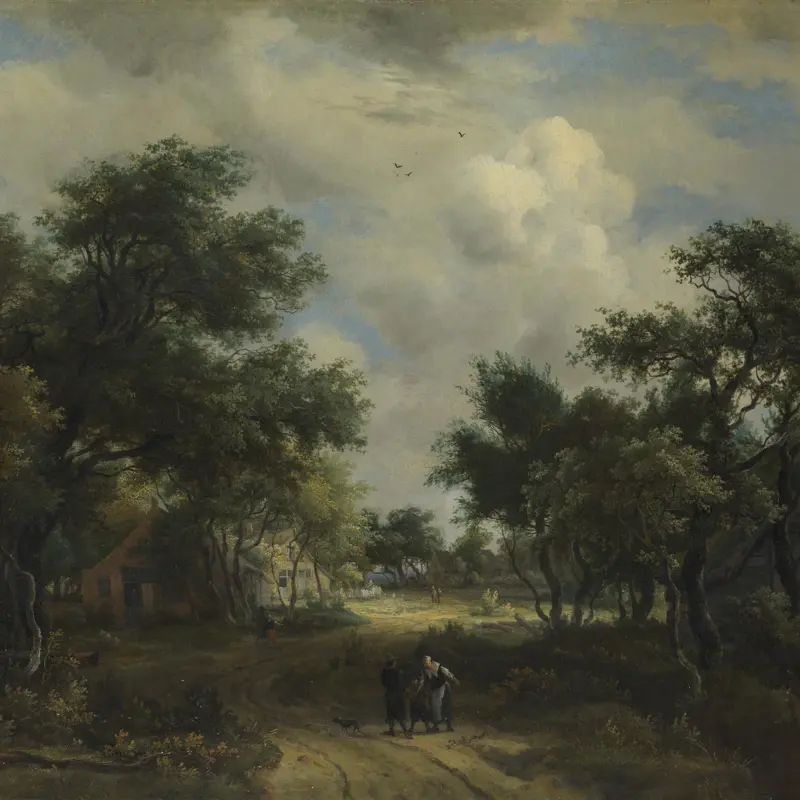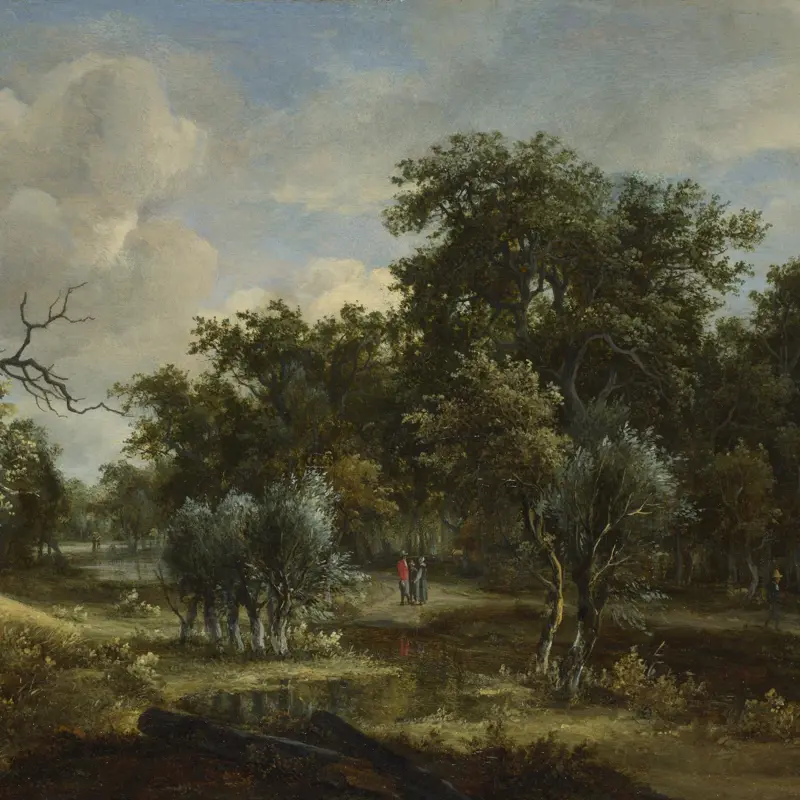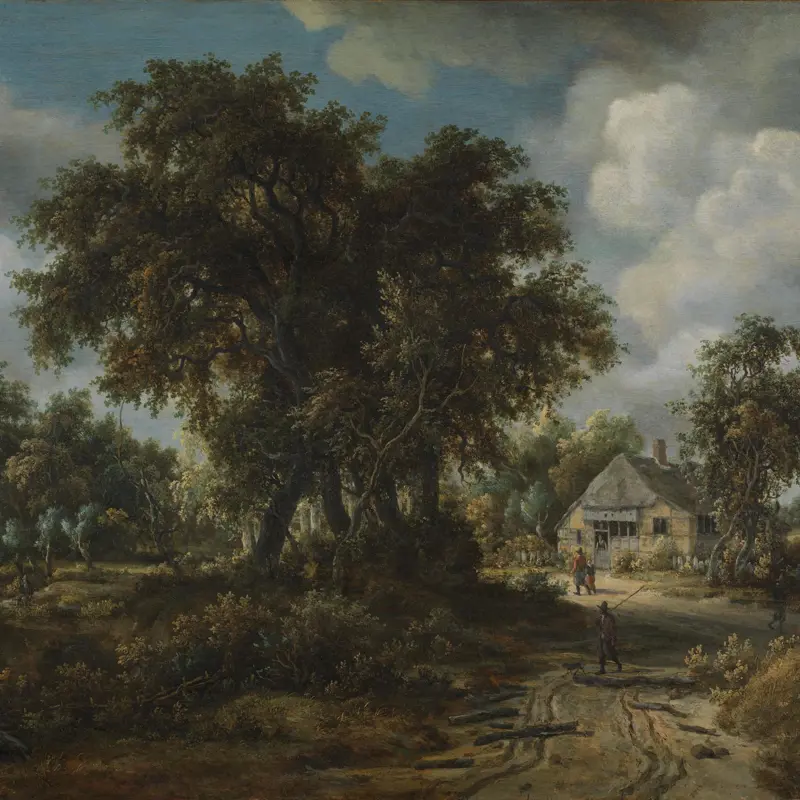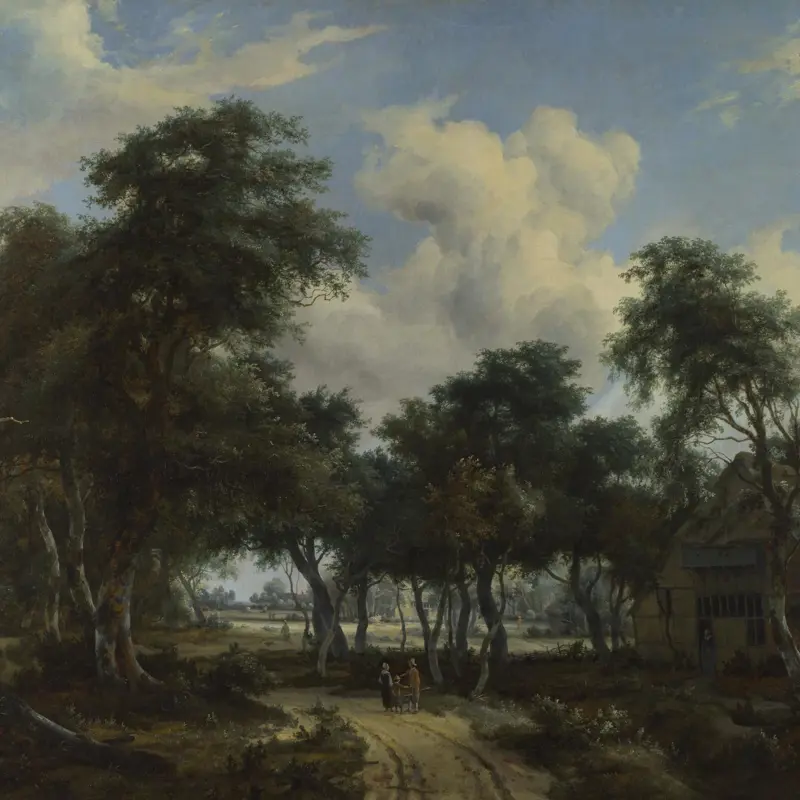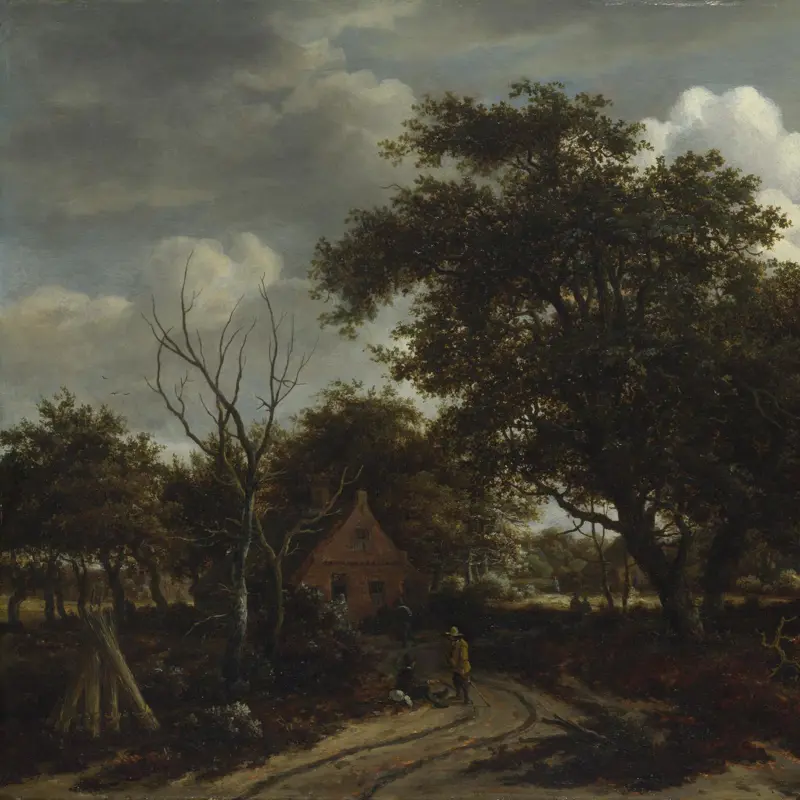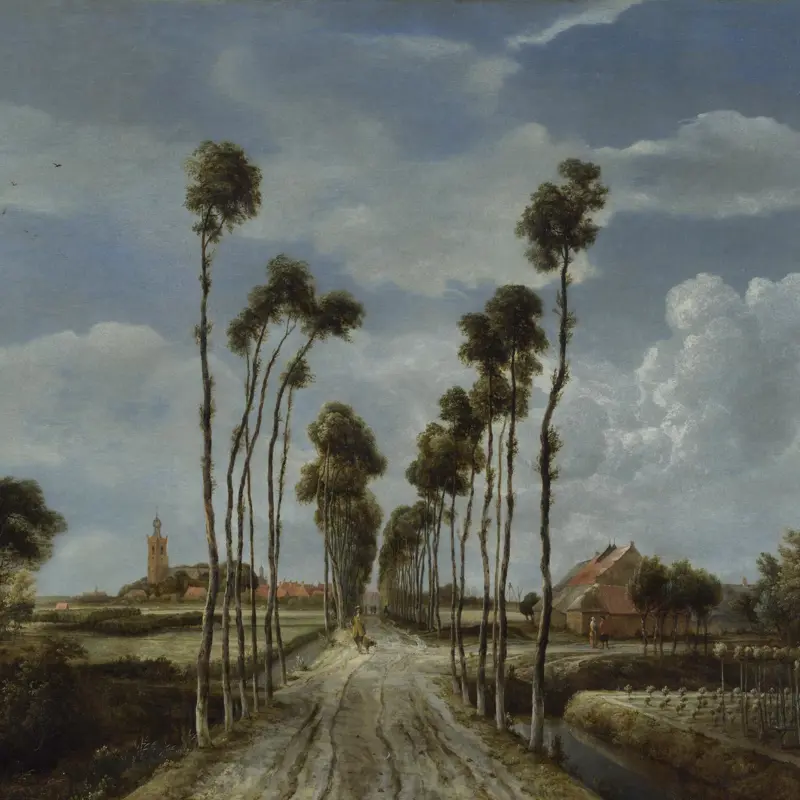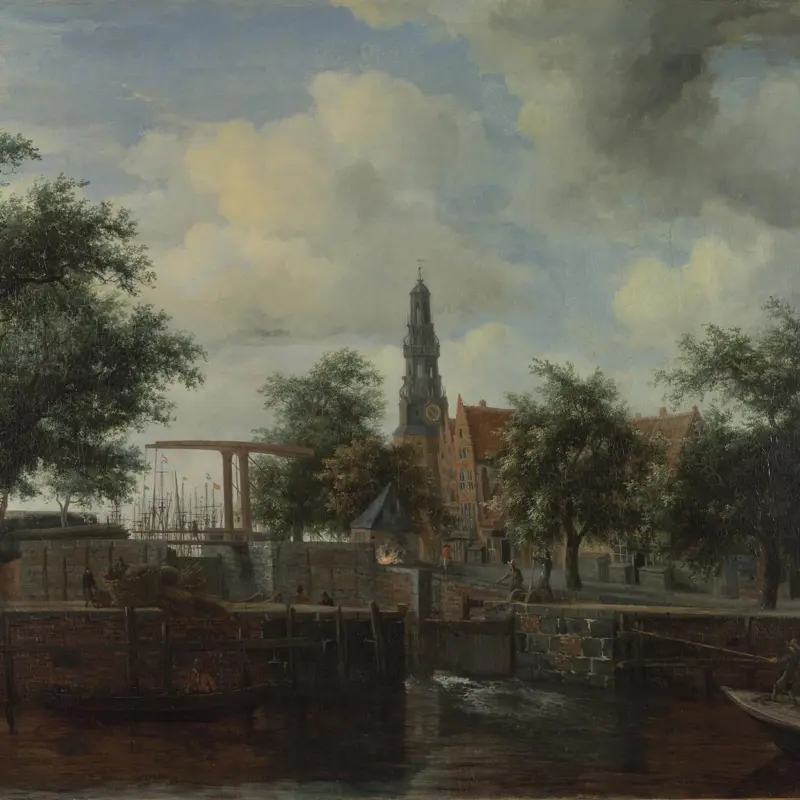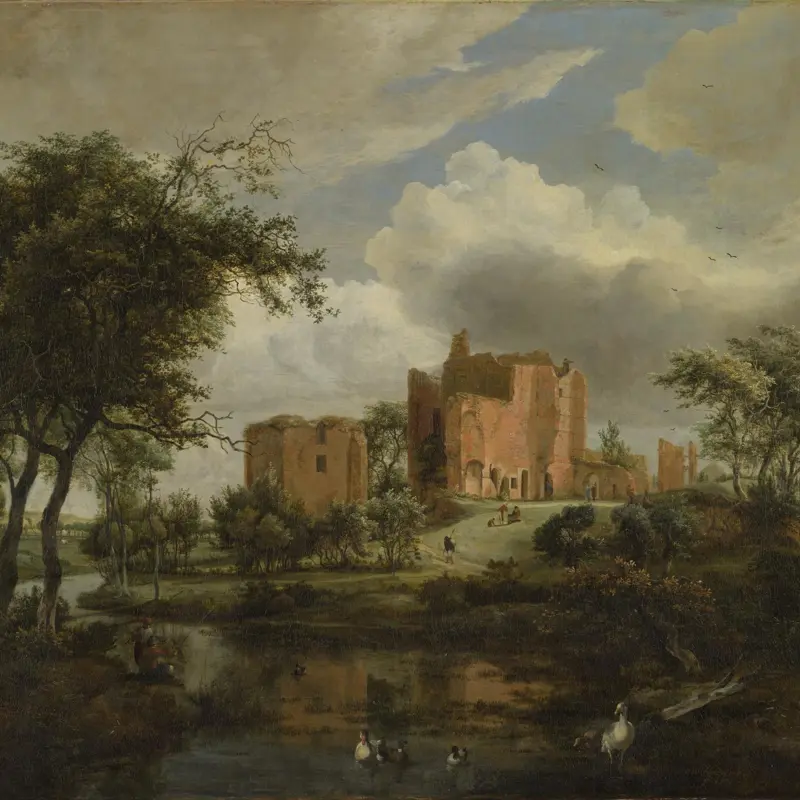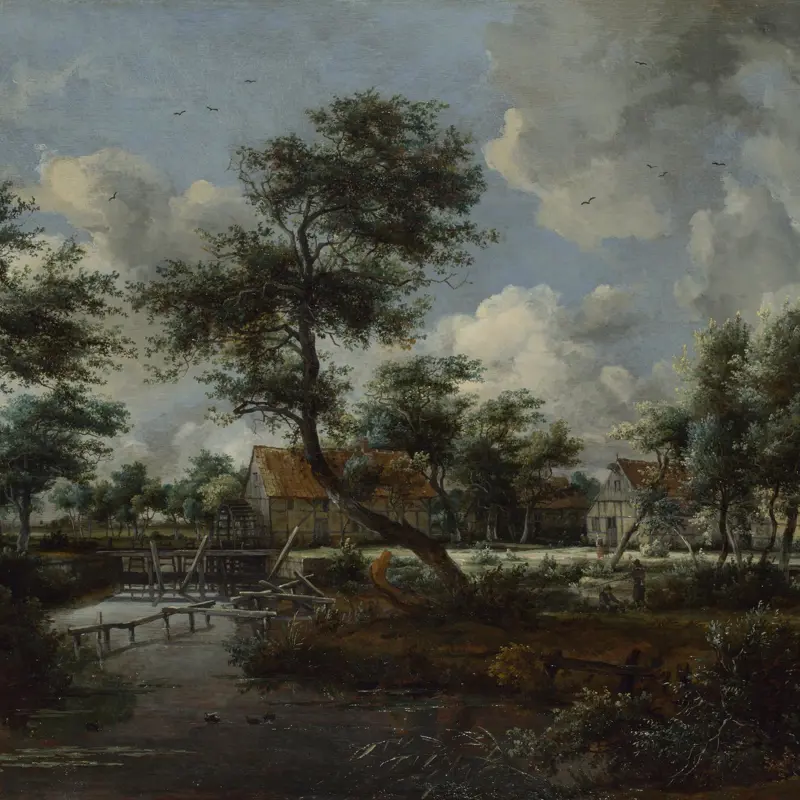Hobbema was born in Amsterdam in 1638, the son of a carpenter. At the age of 15, he and his younger brother and sister are recorded as having been sent to an orphanage. Two years later, in 1655, Hobbema was taken on as an apprentice to the famous landscape painter Jacob van Ruisdael.
In his early works Hobbema closely followed the compositions of Ruisdael, before developing his own individual style, which is lighter than Ruisdael's in both tone and mood. He specialised in elaborate woodland scenes, often large-scale compositions animated with small figures and repeated in several variants. Watermills were a favourite motif.
In 1668, Hobbema married, and in the same year took up the post of municipal wine-gauger which involved the weighing and measuring of imported wines. With a wife, a job and a salary his painting output slowed down considerably - but he did produce his most famous work, 'The Avenue at Middelharnis', in 1689, twenty years after having given up art as a profession.
The last years of Hobbema's life were harsh. His wife and his two children died in 1704, and five years later Hobbema died to be buried in a pauper's grave.
Meindert Hobbema
1638 - 1709

